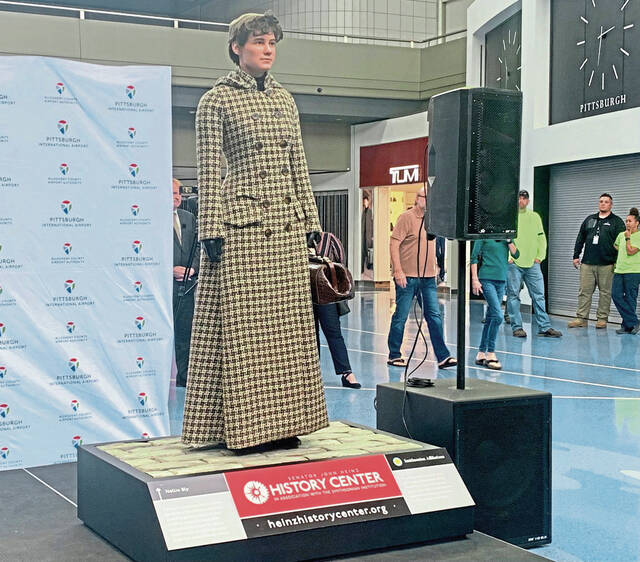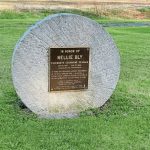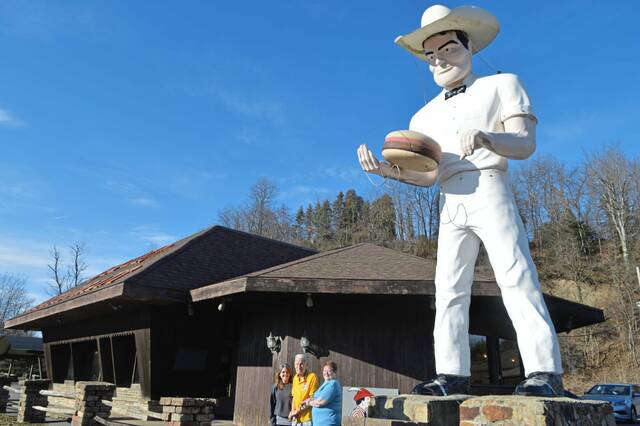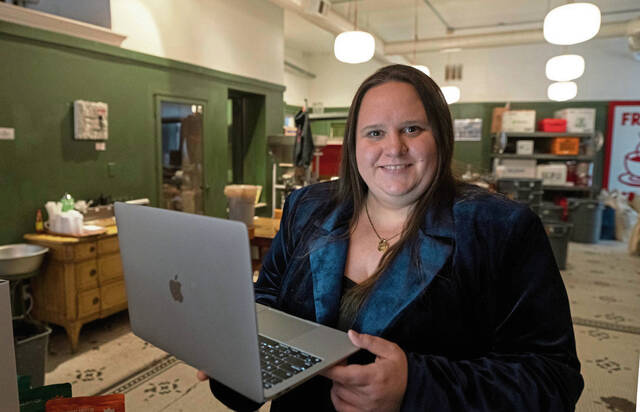The newest addition to greet passengers at the Pittsburgh International Airport is a statue of Nellie Bly — flanked by Steelers great Franco Harris and the “Father of Our Country,” George Washington.
Bly was an Alle-Kiski Valley native.
Born Elizabeth Cochran on May 5, 1864, in the Cochran Mills neighborhood of Burrell Township, Armstrong County, her parents were Michael and Mary Jane Cochran.
In 1849, Michael Cochran opened the first general store and took over operation of the grist mill and saw mill in 1859 and renamed the settlement Cochran Mills. Besides those businesses, Michael Cochran was the postmaster and the justice of the peace.
He had an interest in law and eventually became a lawyer and moved the family to Apollo.
A good student, Elizabeth had a talent for writing. She was accepted at Indiana Normal, now known as Indiana University of Pennsylvania. But her father died after her freshman year, and Elizabeth and her mother moved to Pittsburgh.
While reading the Pittsburgh Dispatch one day, Elizabeth became incensed at an editorial by George Madden with the title of “What Girls Are Good For.” In it, Madden claimed that women “should only work in feminine professions such as nursing and teaching.”
She rebutted Madden’s editorial, and it so impressed Madden that he hired Elizabeth, 18, at the Dispatch for $5 per week. He gave her the pen name “Nellie Bly.”
Bly immediately shattered journalistic stereotypes of covering garden parties and high society events, opting to write about topics like divorce — taboo in that era.
After a stint as the Dispatch’s Mexican correspondent, she was hired by one of the nation’s prestigious newspapers, the New York World.
Bly bucked another norm by going undercover and had herself committed to Blackwell’s Island asylum, where she spent 10 days documenting abuses toward mental patients.
She rose to International fame in 1890 when she traveled around the world in 72 days, breaking the fictional record of 80 days set by Phileas Fogg in Jules Verne’s novel. Bly made it around the globe in 72 days, 6 hours and 11 minutes.
In 1894, she married industrialist Robert L. Seaman, 42 years her senior and the head of Iron Clad Manufacturing. Seaman died in 1910, and Bly took over the company. Different from most industries of the time, Bly supplied her workers with an on-site doctor, day care and a bowling alley. The workers paid 50 cents per month toward health care.
But the firm was financially destroyed in 1913 after employees embezzled $2 million from Iron Clad. Bly went back to journalism and broke another norm in 1914 when she was in Austria as World War I broke out. Trapped because of the war, she became the world’s first female war correspondent for the New York Evening Journal.
Bly died of pneumonia on Jan. 28, 1922, at age 57 in New York’s St. Mark’s Hospital. She was interred in a modest grave in Woodlawn Cemetery in the Bronx.
In 1978, a group of admirers raised money and bought a quality headstone for Bly.
By the way, if you’re looking for Cochran Mills, forget it. The small community was engulfed by the Crooked Creek Dam and Reservoir in 1940.













